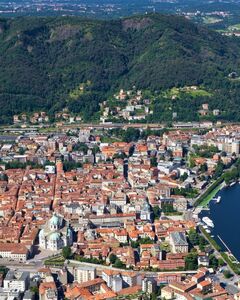
castles-and-ruins near Guess



NON SOLO BARCHE offers Boat rentals and Taxi boat service on Lake of Como. We can transport peoples from and to every places on our Lake's coasts. We have a lot of boat for rentals, with and without on board personnel. Good boats, experience and...
The Tower is located on a rocky outcrop above the village of Spurano and it was an ancient watchtower, which probably dates back to the 12th century. The fortified structure, included in the difensive system of the Comacina Island, was probably...
An ancient palace of the seventeenth century. It belonged to one of the most influential families of Lake Como, the Brentano, who later moved to Milan and then to Germany. It is currently used in part as a city hall where the renown painter Giulio...
Originally a signalling tower, that later became a fortress as documented 1158. There is no information about the proceeding centuries until 1454 when the area fell into the hands of the Republic of Venice and the Adda River became the natural...
The Castle lies on a peninsula jutting out into Lake Como close to Riva Bianca and its namesake beach. Built in the Romanesque period, the fortress was at the focus of several historical events, like the battle between Milan and Como in 1124. It was...
Also called Tower of Barbarossa, stands high over Mandello dating from the twelfth century. The tower has been rebuilt over the years, but retains interesting architectural features like the arched portal, the remains of painted trophies and a...
Volunteers of the Cultural Center Library Bellagio deal with loaning library books and organize various cultural events....
It is thought the tower was built at the behest of Fontanedo Bernabo Visconti in 1357, on the defensive line of Upper Lake, but perhaps it was only enhanced an existing structure. It is located about 700 meters downstream of the village of...
In the medieval center of Villincino, was a fortified town built in the late tenth century. The village was owned by the wealthy family Carpani. The town was destroyed in 1278. The small and picturesque district is accessed by going through a tower,...
It is a private building constructed on roman foundation with an irregular square plant. The building, which has crown walls with battlements to protect the round parapet, can be dated between 1360 and 1370. It is a typical castle-enclosure, which...
Fort Fuentes is a former military fort on the hill of Montecchio or Monteggiolo near Colico, northern Italy. It was built by the Spanish governor of Milan, Don Pedro Enríquez de Acevedo, Count of Fuentes, to defend the northern border of the Spanish...
Fort Montecchio-Lusardi is a military fort situated in Colico, in the province of Lecco, northern Italy. It was built between 1911 and 1914. It is the only Italian fort from World War I which has been preserved intact with its original weapons. The...
A must see--one of the most beautiful castles on the lake. It is a walled enclusure, developed around a squared tower with restored battlements and a real drawbridge. Additional attractions feature live falconry shows, an exhibition dedicated to the...
Trapezoidal shaped castle with three towers built by counts Della Torre of Rezzonico in 1363. It is described as a "castle-fence", fortifying an area of two thousand square meters which surrounded the town and the main tower. Today the castle is...
Placed on a hill overlooking the town, the castle was built in late Middle Ages to block the way to Valvarrone and it still remains a well-preserved tower, surrounded by ruins of ancient houses. The first proofs date back to 1039, when it suffered a...